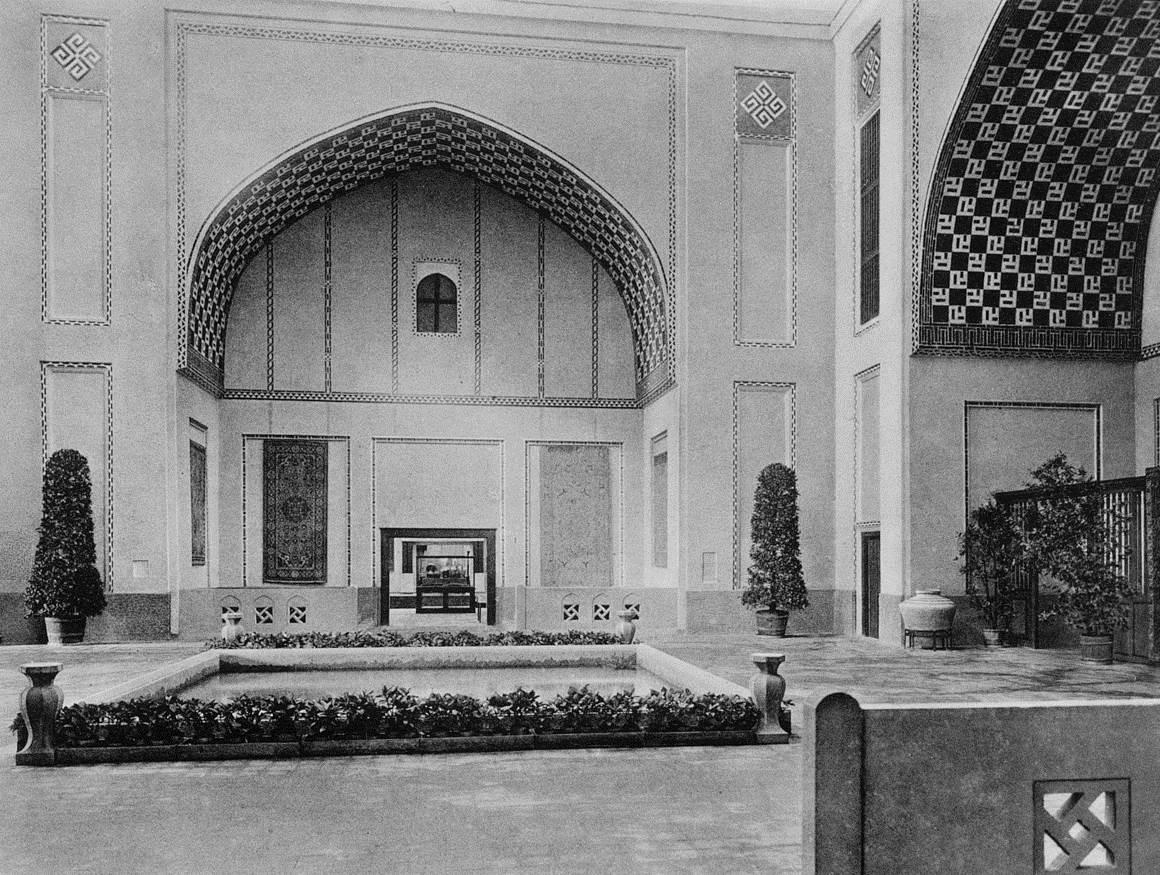
Orientalist display techniques continued even into the famous 1910 exhibition in Munich – which expressly aimed to avoid having an Arabian Nights-style impression “somehow arousing the impression that [the exhibition halls] were buildings, halls, chambers of the Orient” .
The exhibition started in an elegant foyer with pointed arches and mashrabiya. This was just a prelude to the monumental entrance hall – sometimes referred to as the ‘Court of Honour’ or ‘Repräsentationsraum’. All the visitors to the exhibition came in – and left – through this space, which followed the general outlines of Persian iwan architecture, with wide pointed arches and shallow niches. It was reserved for a small group of first-rate carpets of exceptional provenance – like the Vasa kilims. These were hung as single pieces on large neutral wall surfaces, like Old Master paintings in a gallery

Like the Turkish quarter at the 1867 Exposition Universelle in Paris, and other similar Muslim quarters in World Fairs, this was surely a Western view of the east: with the West deciding what was an ‘authentic’ presentation.
This is especially so when you remember that the Vasa kilims were woven expressly to be hung in a Western setting – in Wawel castle in Cracow. As you can see here, this is nothing like the specially designed display area in Munich!